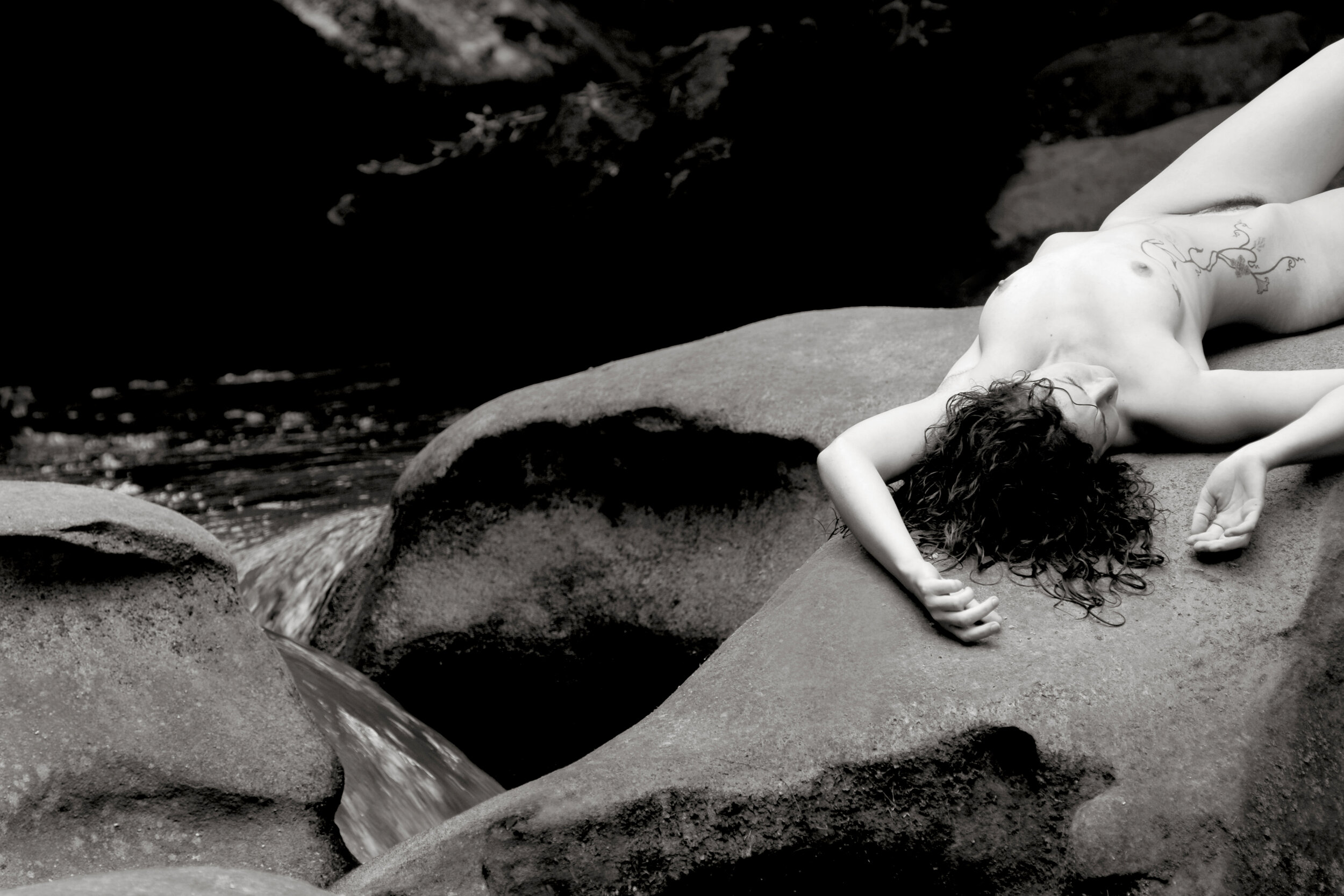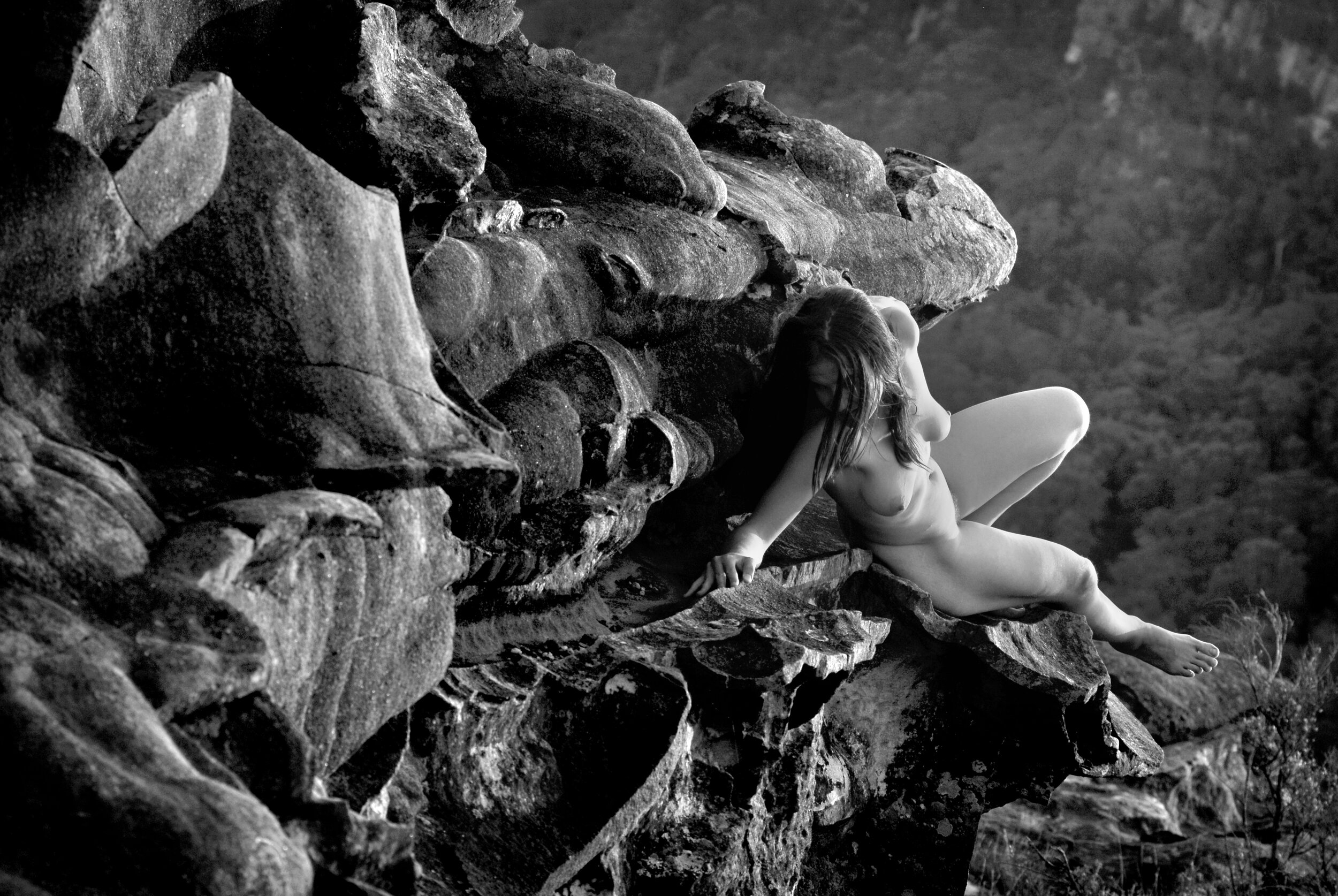
Acknowledgement of Country
“We acknowledge the traditional custodians of the lands in which we work and live in and recognise their continuing connection to land, water and community. We pay our respects to the elders, past, present and emerging”
Merimbulah
Merimbulah (two waterholes) depicts a woman’s connection with the land and their relationship with her mother earth. All three participating models felt strong connection, not just with nature but the land and water within it. The Australian bushland sits in the modern psyche of many Australians. For indigenous Australians, it is richly, deeply steeped in a culture where spirituality intertwines with the land. For Aboriginal men and women , land and water (and it’s care) are central to it’s culture.
“I chose models who had connection with land. (Australian and African). This was essential as the photographic work required a literal engagement with the land and water. Perhaps moreso, a deep respect for mother earth. Without this respect, the whole exhibition would collapse”
The photos depict yearning, emersing, connecting, embracing with the bush (land and water). The subjects are explorative, interwoven and emotionally engaged. At other times, loving, nurturing and peacefully content.
This project followed David’s two diplomas of study in transpersonal art therapy and counselling - a psychology that embraces, honours and engages ancient (and modern) wisdom to assist those in need. A wisdom that sits side by side with Eastern and contemporary traditions” .
“As a non-indigenous South Australian, I have developed a deepening respect for the land which I access to for the purpose of this project. I expect this respect will deepen further” says David.
The locations used are in Leura, (Gundungurra country) , Turramurra (Guringai country) and Hornsby Valley (Darag country). Inhabited lands for an estimated 15,000-20,000 yrs.
Merimbulah c2008









































‘The land is my mother. Like a human mother, the land gives us protection, enjoyment, and provides our needs - economic, social and religious. We have a human relationship with the land: Mother, daughter , son.
When the land is taken from us or destroyed, we feel hurt because we belong to the land and we are part of it”
Djinyini Gondarra